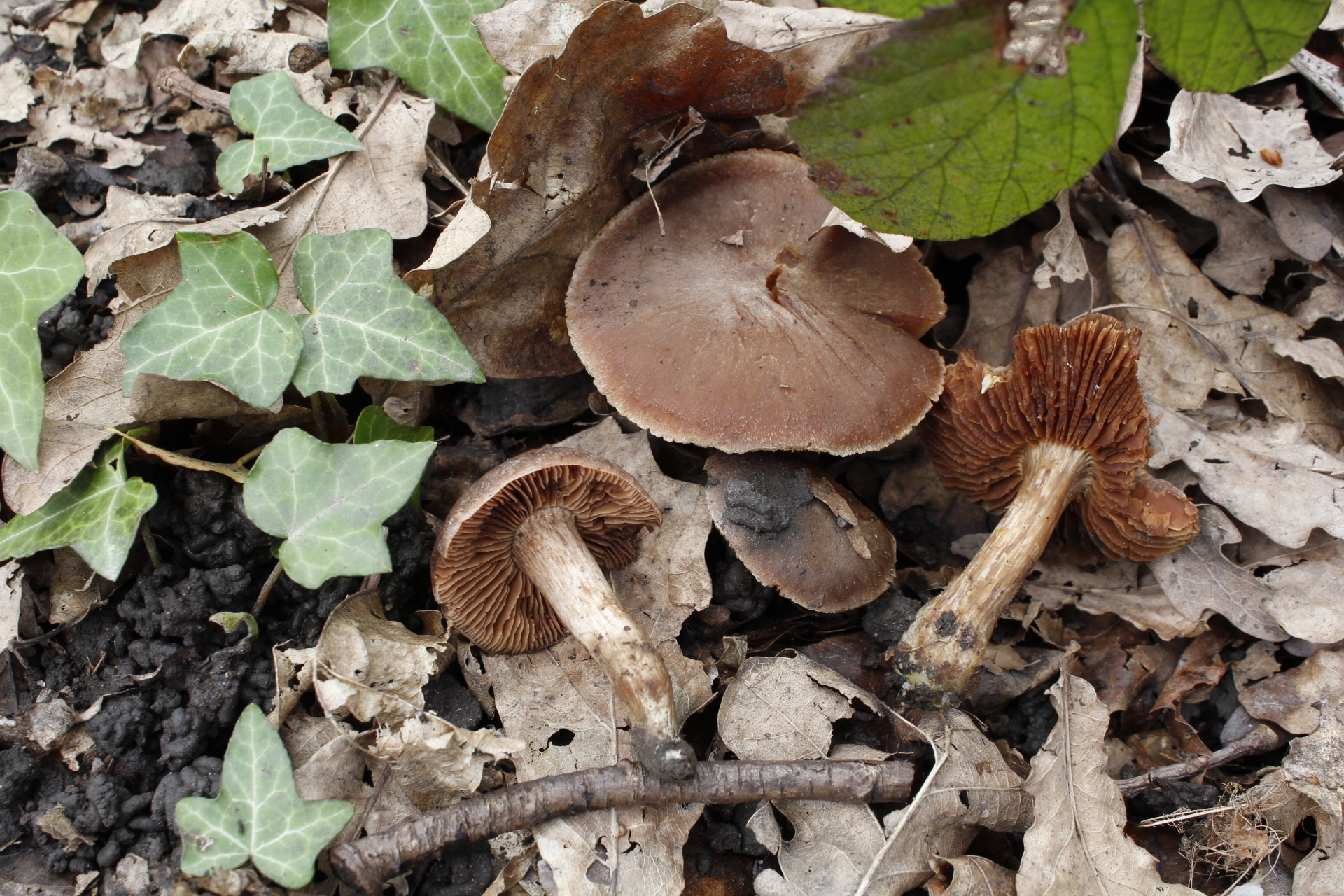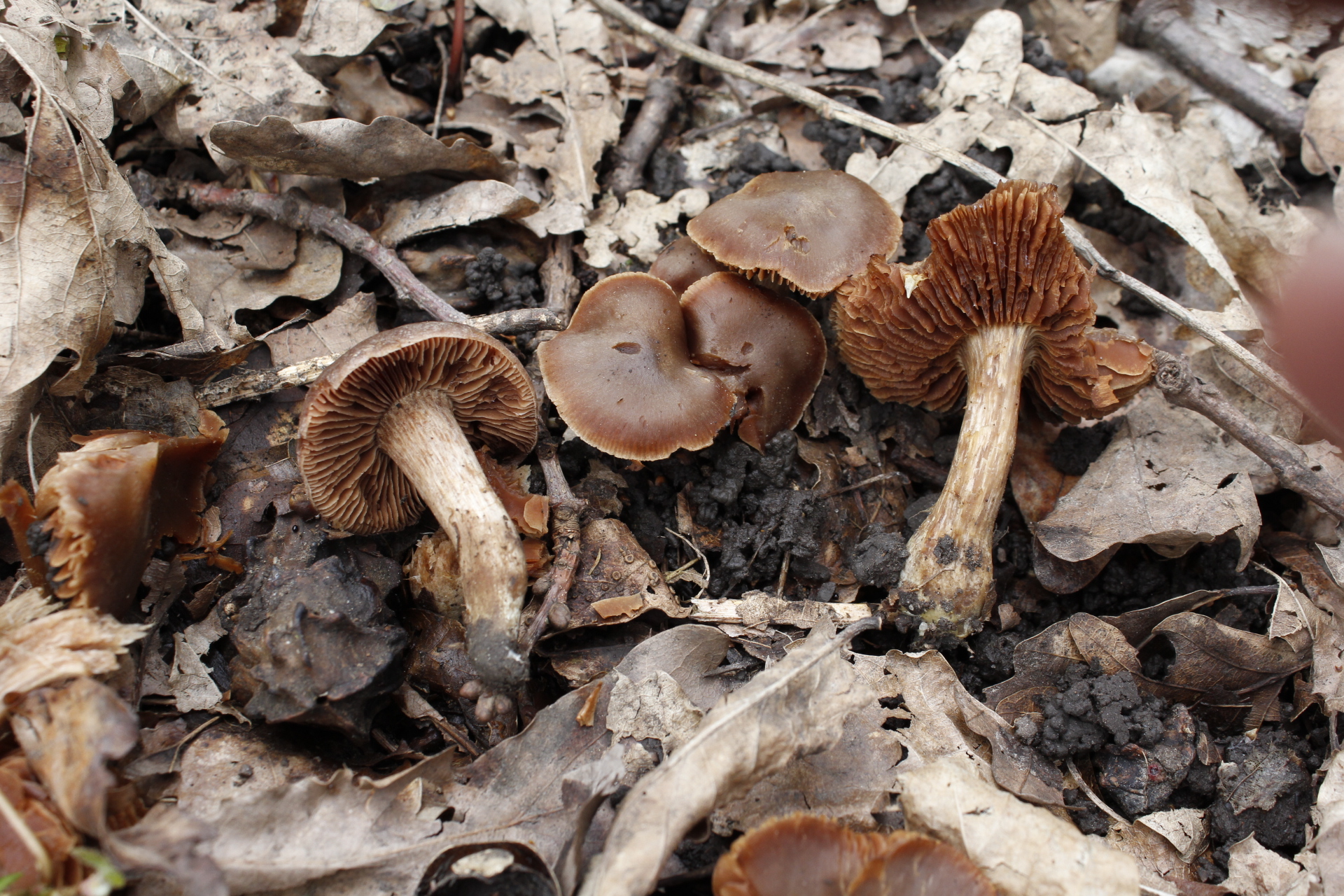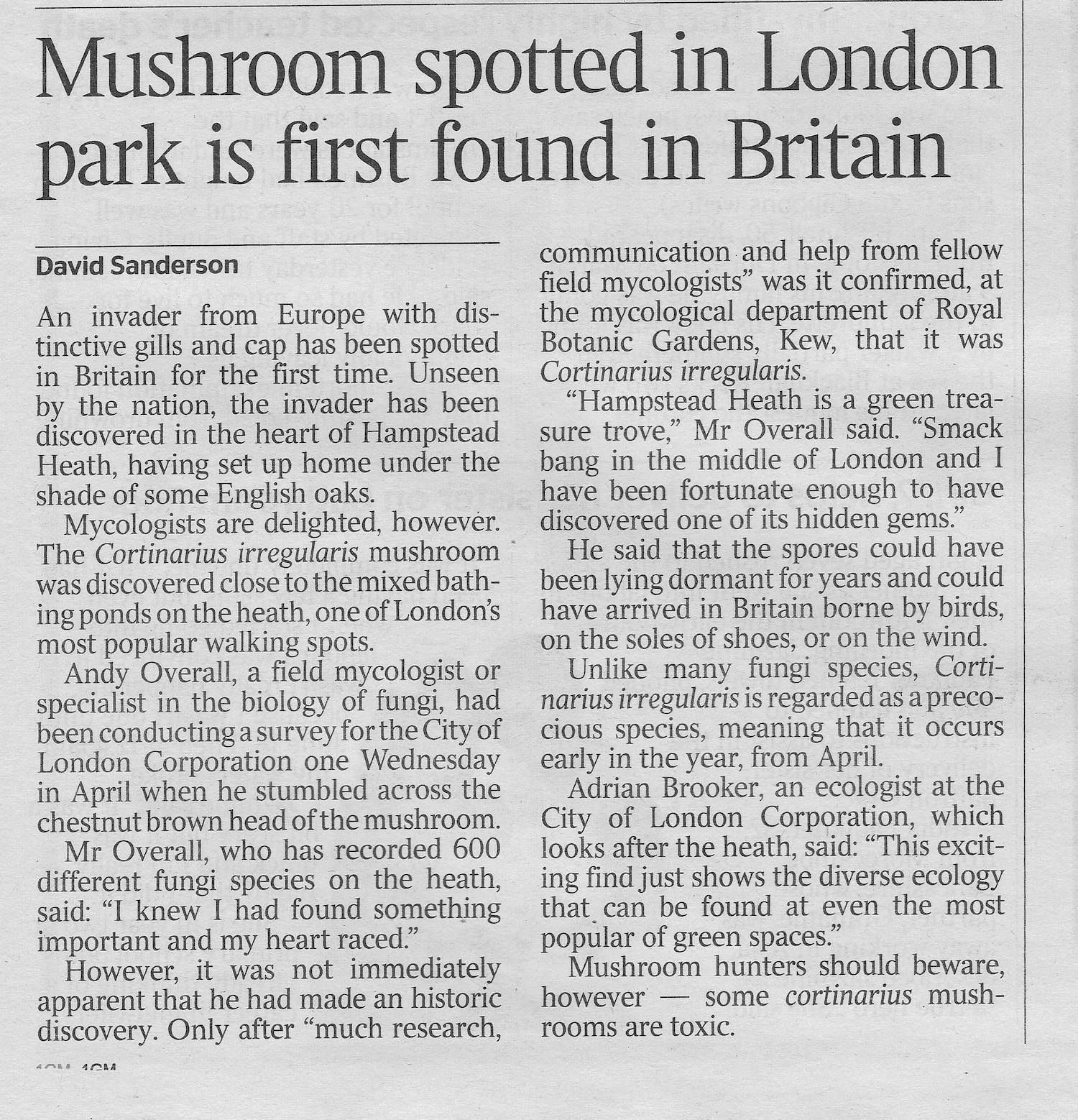On April 9th 2014 I came across an interesting Cortinarius on the west bank of the mixed pond on Hampstead Heath. I was there continuing a survey (carried over from 2013) for CoL around the Hampstead and Highgate pond chains.
The Cortinarius, following much research, communication and help from fellow Field Mycologists, was confirmed as Cortinarius irregularis, a species new to Britain.
Cortinarius irregularis is regarded a precocious species, meaning that it occurs early in the year from April onward. It is a taxa belonging to the subgenera Telemonia and to the section colymbadini. Some believe it belongs to section uracei as the fruit bodies darken upon drying. There are number of sections that exhibit similar characteristics. The fact that C. irregularis does not blacken as such, reveals that it falls within colymbadini. Another characteristic is that gill and cap tissue squashed in 2% KOH with water and left to dry will leave a yellowish/green dye at the edge of the cover slip.
Details on the Collection
Habitat
A pond margin consisting mainly of Quercus rober surrounded by a few young specimens of Fagus silvatica, Carpinus betulinus the odd Cratageus and Salix amongst Acer and some Rhododendron, on London Clay.
Description
Cap 30-70mm convex, low conic, flat, mid to chestnut brown, with cream margin from velar remnants, surface on some appearing as if dusty from velar remnants, some more silky looking, margin striate at immature stage, lost in maturity, hygrophanous, drying in pale brown streaks against red-brown ground.
Stem 38-53 x 7-12mm (base up to 12mm in some) cylindrical, base swollen or somewhat tapered, longitudinally fibrillose, streaked white & brown, base paler but not distinctly so. Flesh a washed out pinkish brown.
Gills adnate with decurrent tooth, cinnamon brown with pale edge when immature, pale edge lost in maturity becoming a rich red brown, fairly crowded, differing lengths, edge entire.
Smell none.
Exsiccates darkening upon drying.
Microscopic Details
Spores ellipsoid, amygdaliform, hint of a suprahilar depression on some, coarsely verrucose, 7.9 – 9.1 x 4.5 – 5.7um. (there is, apparently a big variation in size) Spore Print – rusty brown
Qmin = 1.55, Qavg = 1.70, Qmax = 1.83.
Cheilocystidia – In Clusters, short clavate, abundant.
Pileipellis and gill trama hyphae (clamped) – Sausage shaped and smooth.
Cap and gill tissue squashed in KOH 2% with water, leaves a green/yellow pigment on the edge of the cover slip, as it dries.
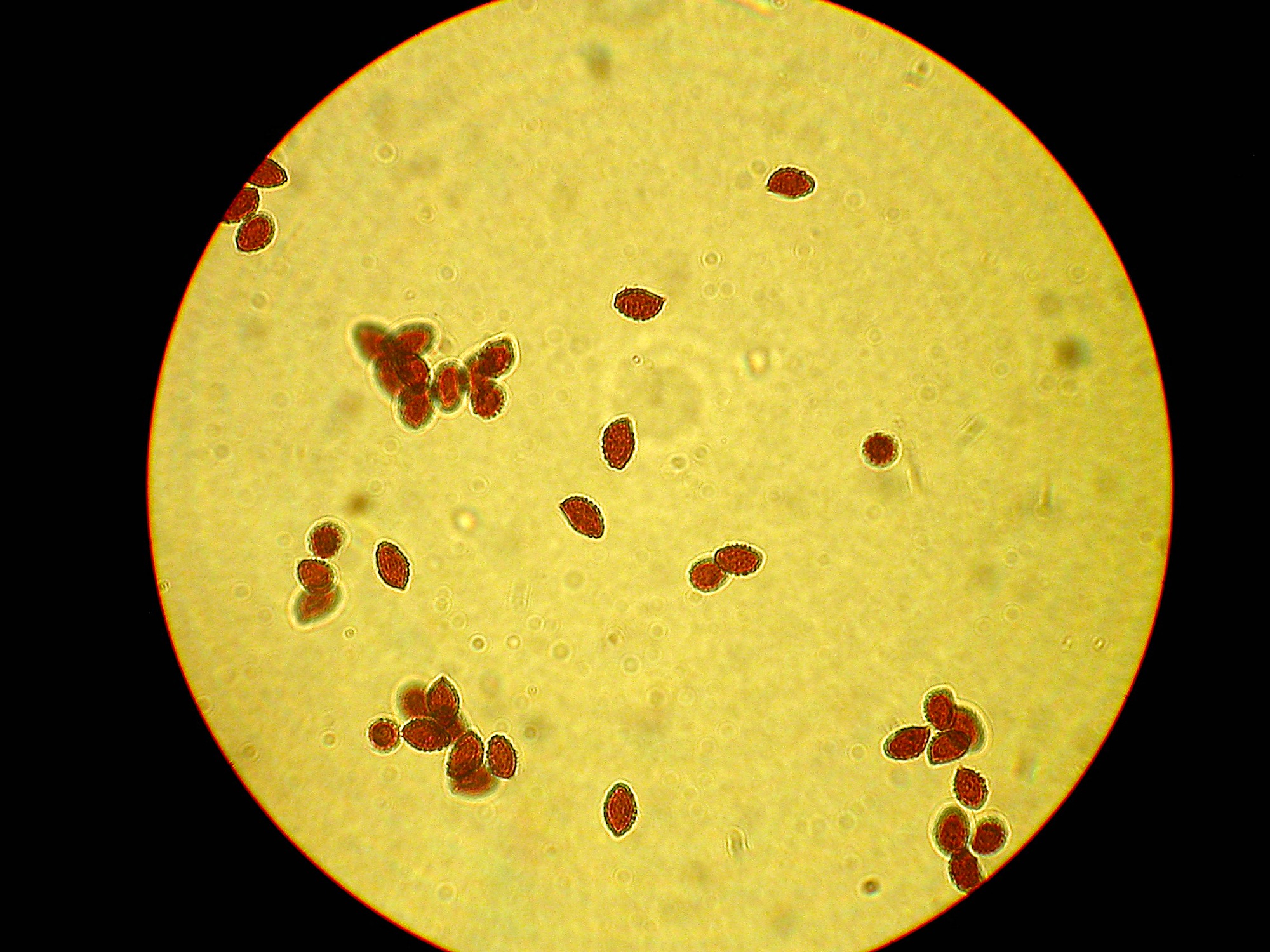 Photo © Andy Overall Heavily verrucose spores.
Photo © Andy Overall Heavily verrucose spores.
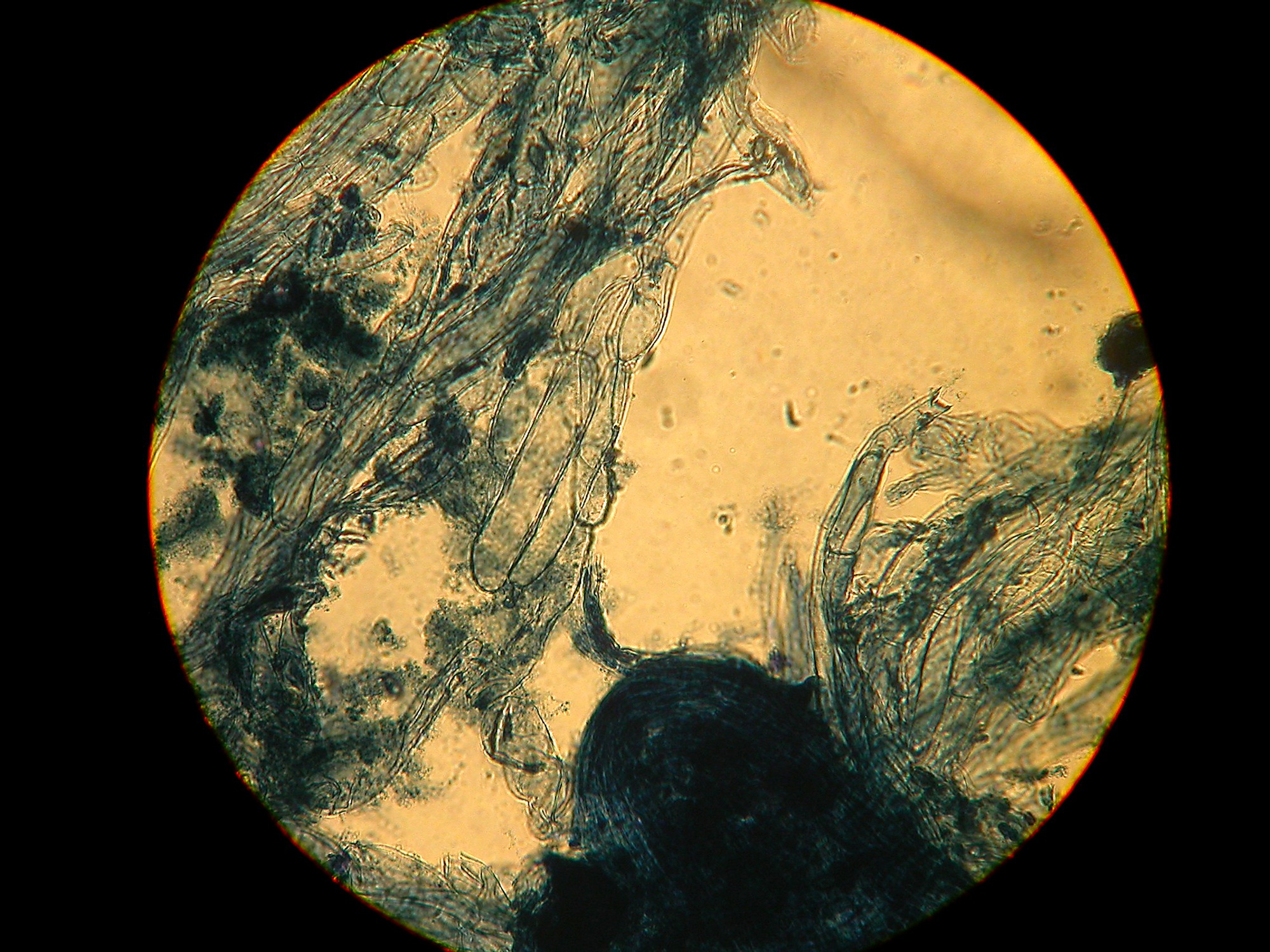 Photo © Andy Overall PP cells, smooth. I’ve included this picture of the cap cuticle cells to highlight an important difference between this species and Cortinarius versus, the cells above are smooth as opposed to the cells of Cortinarius versus which are encrusted.
Photo © Andy Overall PP cells, smooth. I’ve included this picture of the cap cuticle cells to highlight an important difference between this species and Cortinarius versus, the cells above are smooth as opposed to the cells of Cortinarius versus which are encrusted.

